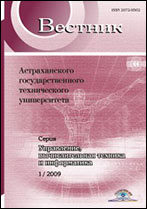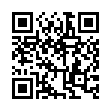|
|
Vestnik of Astrakhan State Technical University. Series: Management, Computer Sciences and Informatics, 2014, Number 4, Pages 112–123
(Mi vagtu350)
|
 |
|
 |
SOCIAL AND ECONOMIC SYSTEMS MANAGEMENT
Structure of control of educational activity in automated training systems
V. V. Laptev
State Astrakhan Technical University
Abstract:
The need for qualified software developers currently have increased significantly. However, high school fails to meet the requirements of the developing market of IT-industry. To accelerate the training process and to improve its quality is possible with the automation of the training process that requires the development of intelligent automated training systems. The article considers the problem of automating the management of the training process. It is proposed to provide educational activities as a system of four fundamentally different types of activities: information, training, supervisory and administrative. The first two activities are essential to the learner, and are under control of the teacher. The other two activities allow you to provide feedback in the training process and are carried out by the teacher. Training system should automate all the activities of the teacher. The feature of teaching programming is that the training activity is major, while information activity plays a supporting role. Therefore, the training system must be able to manage the process of writing programs. It is shown that the training system can be considered as a two-component dynamic organizational system. The types of control that training systems can use to control the training process: informational, motivational and institutional are defined. The training task is presented as the goal of adaptive management. The classic control scheme with feedback is described and the differences between the control circuit in the training system from the classic are identified. The adaptive control algorithm for the process of problem solving with information and motivational management is presented. The principles of constructing optimal training direction are stated and several variants of the optimality criterion are offered. It is noted that when teaching programming the models of assessment of the quality code are fuzzy, so optimization of the training direction should be based on fuzzy mathematics.
Keywords:
training system, scheme of management, types of management, institutional management, motivation control, adaptive control, model of the learner, training trajectory.
Received: 15.09.2014
Citation:
V. V. Laptev, “Structure of control of educational activity in automated training systems”, Vestn. Astrakhan State Technical Univ. Ser. Management, Computer Sciences and Informatics, 2014, no. 4, 112–123
Linking options:
https://www.mathnet.ru/eng/vagtu350 https://www.mathnet.ru/eng/vagtu/y2014/i4/p112
|

| Statistics & downloads: |
| Abstract page: | 90 | | Full-text PDF : | 46 | | References: | 27 |
|




 Contact us:
Contact us: Terms of Use
Terms of Use
 Registration to the website
Registration to the website Logotypes
Logotypes








 Citation in format
Citation in format 